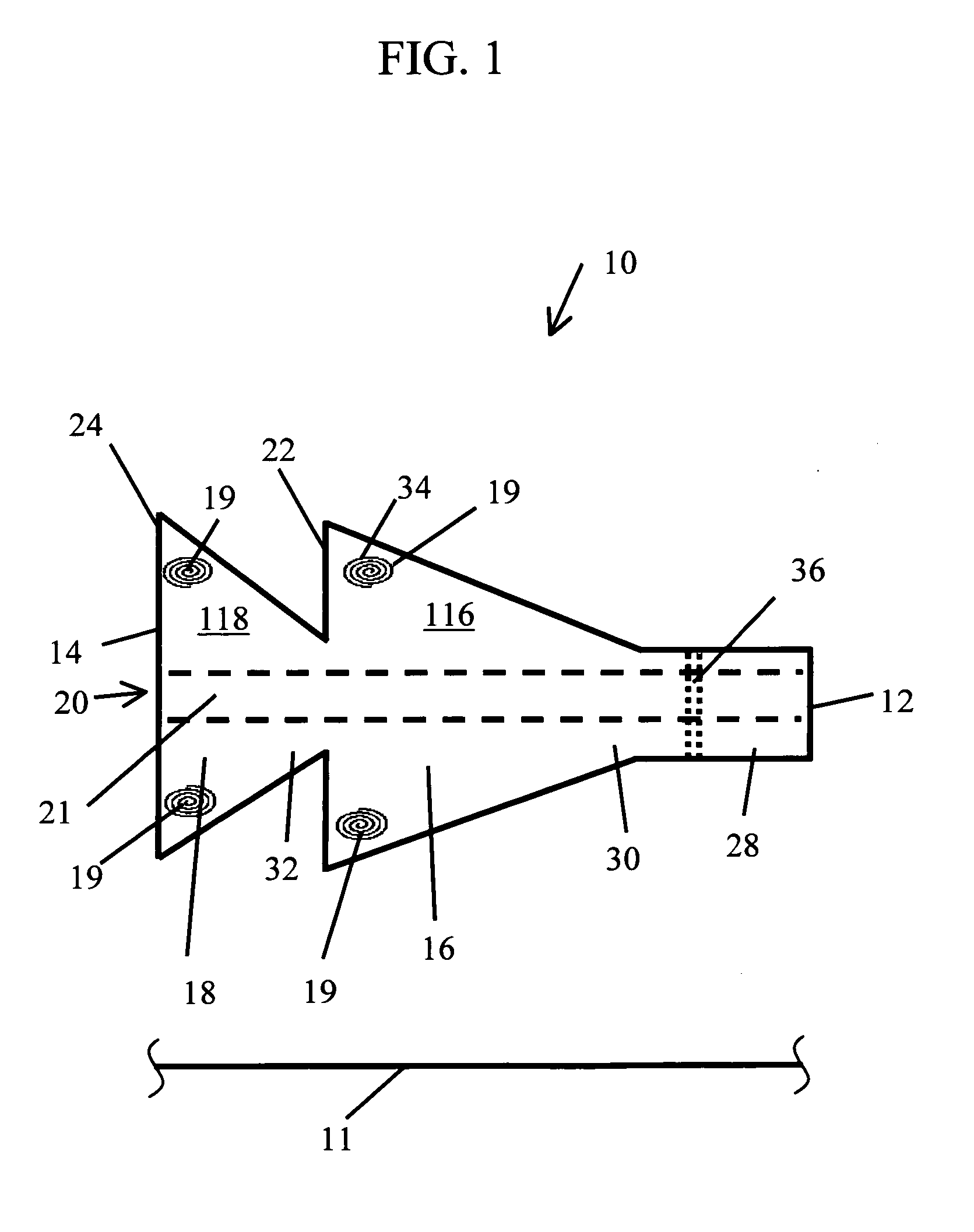Spacer for delivery of medications from an inhaler to children and breathing impaired patients
a spacer and medication technology, applied in the space field, can solve the problems of affecting particle size, affecting particle size, and reducing so as to reduce the formation of adverse recirculation zones and improve the effect of medication recirculation
- Summary
- Abstract
- Description
- Claims
- Application Information
AI Technical Summary
Benefits of technology
Problems solved by technology
Method used
Image
Examples
Embodiment Construction
[0031]Referring to FIGS. 1 and 2, the spacer of the present invention 10 includes spacer walls defining a first conical body 16 having a small diameter proximal end 30, a large diameter distal end 34, and a distal end surface 22. The central portion of the distal end surface 22 of the first conical body is joined to, and in fluid communication with, a small diameter proximal end 32 of a second conical body 18. The first and second conical bodies 16, 18 have respective first and second internal chambers 116, 118 that generally define a continuous spray conduit 11 through the spacer 10 from the distal end 14 of the second conical body 18 to the proximal end 30 of the first conical body 16. Preferably, a mouthpiece 28 will be formed in (or attached to) the proximal end 30 of the first conical body 16 such that the spray conduit 11 extends to the proximal end 12 of the spacer 10. A spray inlet 20 (FIG. 2) for attachment of an MDI or other medication dispensing inhaler is centrally provi...
PUM
 Login to View More
Login to View More Abstract
Description
Claims
Application Information
 Login to View More
Login to View More - R&D
- Intellectual Property
- Life Sciences
- Materials
- Tech Scout
- Unparalleled Data Quality
- Higher Quality Content
- 60% Fewer Hallucinations
Browse by: Latest US Patents, China's latest patents, Technical Efficacy Thesaurus, Application Domain, Technology Topic, Popular Technical Reports.
© 2025 PatSnap. All rights reserved.Legal|Privacy policy|Modern Slavery Act Transparency Statement|Sitemap|About US| Contact US: help@patsnap.com



